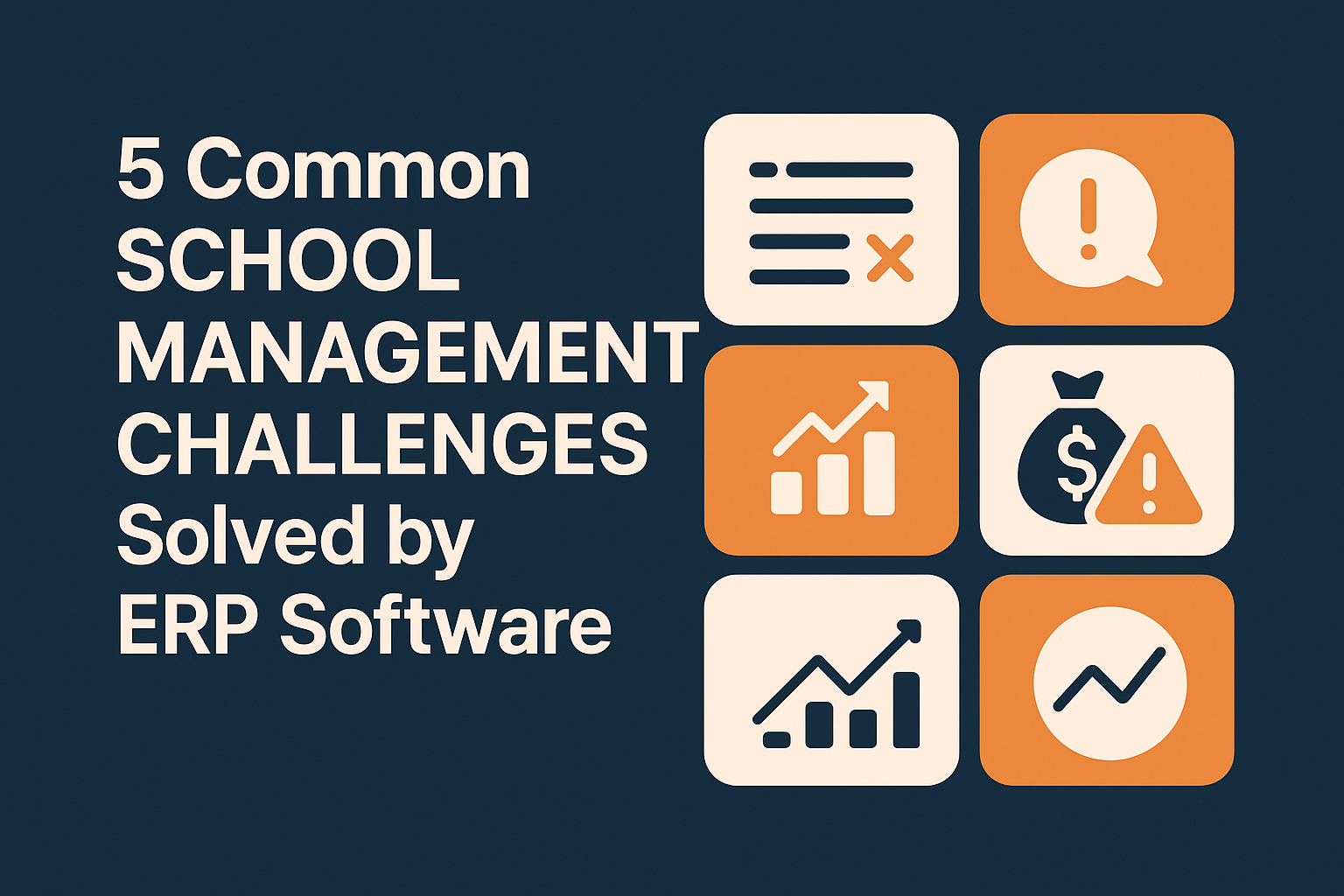5 Common School Management Challenges Solved by ERP Software

Strong 8k brings an ultra-HD IPTV experience to your living room and your pocket.
Managing a school in today's fast-paced, technology-driven world presents numerous challenges. From administrative inefficiencies to communication gaps, school owners often grapple with issues that can hinder the institution's growth and effectiveness. Enter School ERP (Enterprise Resource Planning) software—a comprehensive solution designed to streamline operations, enhance communication, and provide real-time insights. Let's explore five common challenges in school erp and how school management software addresses them.
1. Inefficient Administrative Workflows
The Challenge: Traditional administrative processes, such as manual attendance tracking, paper-based admissions, and fee collection, are time-consuming and prone to errors. These inefficiencies can lead to data discrepancies, increased workload, and reduced productivity.
The ERP Software Solution: School ERP software automates routine administrative tasks, including:
Attendance Management: Automated tracking and reporting of student attendance.
Admissions Processing: Online application forms and automated enrollment processes.
Fee Collection: Digital invoicing, payment reminders, and online payment gateways.
Benefits:
Reduces manual errors and paperwork.
Saves time for administrative staff.
Enhances data accuracy and accessibility.
By streamlining these processes, schools can operate more efficiently and allocate resources more effectively.
2. Poor Communication Between Stakeholders
The Challenge: Effective communication among teachers, parents, students, and administrators is crucial for a school's success. However, relying on traditional communication methods can lead to misunderstandings, missed messages, and a lack of engagement.
The ERP Solution: School ERP system offer integrated communication tools, such as:
Messaging Platforms: Secure channels for direct communication between stakeholders.
Notifications and Alerts: Automated updates on attendance, grades, events, and announcements.
Parent Portals: Real-time access to student performance and school activities.
Benefits:
Enhances transparency and trust.
Fosters greater parental involvement.
Ensures timely dissemination of information.
Improved communication leads to a more cohesive school community and better student outcomes.
3. Difficulty Tracking Student Progress and Performance
The Challenge: Monitoring student performance across various metrics—academic achievements, attendance, behavior—can be daunting without a centralized system. Disparate records make it challenging to identify trends or address issues promptly.
The ERP Solution: School ERP software consolidates student data, providing:
Academic Dashboards: Comprehensive views of grades, test scores, and assignments.
Behavioral Reports: Logs of disciplinary actions and commendations.
Attendance Records: Detailed tracking of student presence and punctuality.
Benefits:
Enables data-driven decision-making.
Identifies students needing additional support.
Facilitates personalized learning plans.
Centralized tracking ensures that educators and parents can collaborate effectively to support each student's growth.
4. Fee Collection and Financial Management Issues
The Challenge: Managing school finances, especially fee collection, can be complex. Manual processes may result in delayed payments, errors in records, and lack of transparency.
The ERP Solution: ERP systems streamline financial operations through:
Automated Billing: Generation of invoices and receipts.
Online Payments: Integration with payment gateways for convenient transactions.
Financial Reporting: Real-time insights into income, expenses, and outstanding dues.
Benefits:
Improves cash flow management.
Reduces administrative burden.
Enhances financial transparency and accountability.
Efficient financial management supports the school's sustainability and growth.
5. Lack of Real-Time Data for Decision-Making
The Challenge: Timely and informed decision-making is essential for school leadership. However, without real-time data, administrators may rely on outdated or incomplete information.
The ERP Solution: School ERP software provides real-time analytics and reporting features, including:
Customizable Dashboards: Visual representations of key performance indicators.
Automated Reports: Scheduled generation of reports on various aspects of school operations.
Data Exporting: Easy extraction of data for further analysis.
Benefits:
Supports strategic planning and resource allocation.
Identifies areas for improvement promptly.
Enhances responsiveness to emerging challenges.
Access to real-time data empowers school owners to make informed decisions that drive success.
Conclusion
Implementing a School ERP system addresses critical challenges in school management by automating administrative tasks, enhancing communication, consolidating student data, streamlining financial operations, and providing real-time insights. For school owners aiming to improve efficiency, transparency, and decision-making, investing in a robust ERP solution is a strategic move towards achieving educational excellence.
More Useful Resouces:
The Future of Efficiency: How School ERP Software Is Evolving in 2025
The Future of School ERP: How AI and Automation Are Redefining Education Management
The Complete Guide to School ERP Software: Features, Benefits & More
Note: IndiBlogHub features both user-submitted and editorial content. We do not verify third-party contributions. Read our Disclaimer and Privacy Policyfor details.







